In the Break Room: Calibrachoa from Start to Finish to Sold
Well, we’ve wrapped up our 30-plus episodes covering poinsettia production, from the time cuttings were delivered until the finished plants left your greenhouse for retail. But we have plenty more videos to share and many more to come in the next 12 months.
December is a good time to prepare for incoming crops, so how about we take a look at how to maximize production of one of our industry’s hottest crops, calibrachoa.
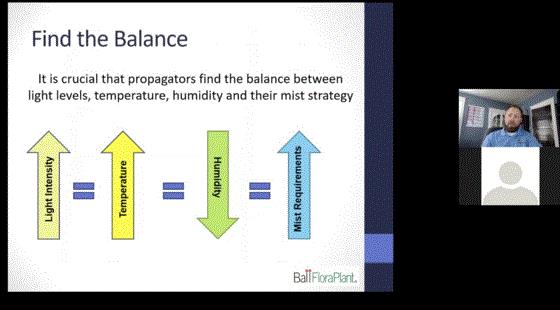
THIS VIDEO takes calibrachoa from propagation to finish in a real-world, pragmatic way, thanks to presenter James Doukas. You may know him from such hit presentations as … all of our poinsettia videos, LOL!
One thing that’s great about James as a presenter is that he takes time before jumping into each stage to actually define the stage as part of the production process, and the common mistakes to avoid. It’s great information for new and experienced growers alike. Here's what he covers in the video:
-
Ensuring a good start with proper sanitation, uniform tray filling, substrate management, tips on dibbling, and using rooting hormones.
-
Stage 1 environment; balancing light levels; temperature, humidity and mist; fertility, and moisture management.
-
Stage 2 mist strategies, irrigation tips, nutrition strategies, growth regulation, and integrated pest management.
-
Stages 3 and 4 are covered together, focusing on how to change the greenhouse environment appropriately, building roots, fertility, bulking the top half of the plant, pinching, controlling growth, and toning.
-
The finish stage includes specific strategies for low- and medium-vigor baskets, as well as quarts. It also looks at pest management and media pH and EC.
But wait, there’s more! For those of you who prefer to put in earbuds and listen to a PODCAST, I’ve got you covered, because James and I recorded an episode of STEM: Insider Tips for Greenhouse Pros a couple years ago covering a lot of this information in more of a discussion format, still focused 100% on calibrachoa.

Nick’s Tip of the Week: Getting Ready for Spring
Each week, I’ll work with my buddy Nick Flax, a technical services expert at Ball, to share a concern that’s come up during one of his numerous calls with growers across North America. This week, he’s following our “get prepared to crush 2022” theme with a look at managing fungus gnats that might still be hiding out in your greenhouse.
PROBLEM: It’s finally December, poinsettia shipping season is in full swing, and I’ve seen some stellar crops in stores and garden centers over the past week. Though many of you may still have points in your greenhouse, it’s safe to say the hardest part of the 2021 poinsettia season (producing top-quality plants) is behind you.
With poinsettias going out the door and empty greenhouses on the horizon, now’s the time to start thinking about preparations for spring. Several growers seeking to get a jump on things reached out this week seeking for tips on getting out in front of various challenges they struggle with each year. I’ll cover several “prep-for-spring” topics over the next few weeks, but this week let’s talk about preventative strategies for managing fungus gnats.
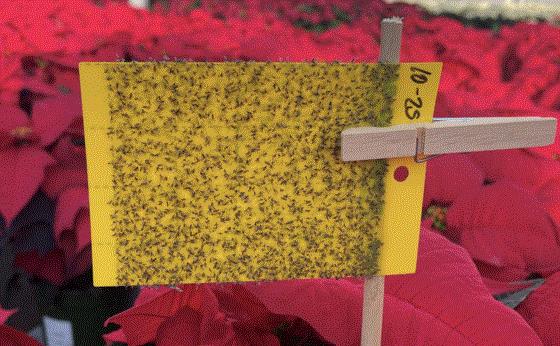
NICK’S TIP:
Reservoir Management. Fungus gnats prefer to hang out in their favorite “hidey-holes,” so your goal is to identify potential places in your operation where fungus gnats may be surviving from previous seasons and root them out.
-
Dirt, gravel and other porous floor materials provide an excellent place for larvae and pupae to survive. Algae, decaying leaf litter and other plant residues that accumulate in porous/absorbent floors can serve as a food source for fungus gnat larvae. Where possible, renovate dirt or gravel floors and install a non-permeable surface. Also, installing weed-fabric is better than leaving bare dirt or gravel floors. However, remember that weed fabric is permeable and needs to be cleaned and sanitized between crops to keep it from becoming a cozy fungus gnat motel.
-
Get pet plants out of the greenhouse! Holdovers from summer and fall (especially large tropicals and foliage plants) that tend to stay moist are fungus gnat magnets. If you’re holding onto foliage plants to sell to customers seeking a lush, green reprieve in the wintertime, be sure to release biologicals or beneficials into the crop regularly or apply pesticides with a good residual to keep gnat counts low.
-
Thoroughly clean (remove all debris and organic matter) and sanitize floors at the end of the season and between crops whenever possible. StripIt Pro and other commercial sanitizing agents help reduce algae growth and turn the floor into an inhospitable environment for pests like fungus gnats.
Preventative IPM Measures. Since fungus gnat larvae and pupae can already be present in growing media or undiscovered reservoirs in your greenhouse, start applying preventative controls early.
-
Beneficial nematodes like Steinernema feltiae can be applied as early as sowing or sticking. These critters seek out fungus gnat larvae in growing media, go “alien” on them (parasitize them) and ensure their demise before they can develop or reproduce.
-
Insect growth regulators (IGRs) containing azadirachtin (ex. Azatin, Molt-X) can be applied as substrate drenches early in crop cycles to disrupt fungus gnat larval development.
-
Note: Both of these measures are only effective against fungus gnat larvae (not adults) and must be deployed preventatively for best effect.

Success with Cuttings Episode 10: Stage 3
The Tech On Demand series of young plant production videos, featuring Drs. Todd Cavins and Nathan Jahnke, moves on to STAGE THREE of the cutting-rooting process.
Now that you have a robust root system to the edge of the cell, your goal in Stage Three is to build root mass, enhance branching, and tone the growth of your crop. Todd and Nathan share ways to create the ideal environment at this production stage, discussing air and soil temperatures, light intensity, humidity, and nutrition. They tackle ways to avoid disease in Stage Three, focusing on roots, and walk you through the pros and cons of plant growth regulators and pinching. The video closes with a comprehensive look at how to optimize your irrigation strategy.
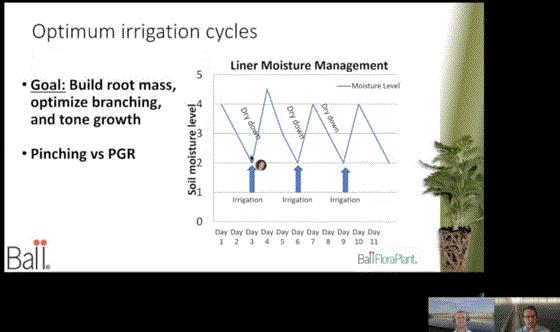
Since we’re up to episode 10 in this Success with Cuttings series, I've decided to organize them all into one easy-to-access PLAYLIST. Bookmark the link so you’ll have it close at hand as you work with your young plants this season.
Tech Tip: Cracked Stems on Cut Snaps?
Recently, a cut flower grower reached out to the Tech On Demand experts with a problem. Looking at the photos and talking to the grower, they learned he was dealing with a major challenge: the stems on his cut snapdragons were cracking during transport to customers.
Here’s how the team diagnosed the issue and advised the grower to proceed.
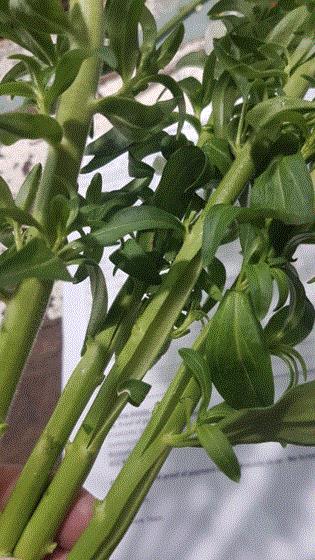
This looks potentially like calcium deficiency. Calcium is important for cell structure and stability. A deficiency could certainly cause symptoms like we see in the photo. Excess water during production and high humidity can limit calcium uptake, making stems weak. While we don’t know exactly when the stems started to split, if cut and placed into water, cell expansion from water uptake may crack the stem due to poor calcium and lignification of the stem. Excess nitrogen would reduce stem integrity even more if there is inadequate calcium.
Tips for Producing Seed Lavender
Wonderful lavender crops can be produced from both seed and cuttings. And we all know lavender is trending, as indicated by a rapidly expanding market and increased consumer demand. In response, seed and vegetative breeding companies continue to release excellent new varieties.
If you’re planning to grow lavender from seed this year, Chris Fifo, perennials guru with Darwin Perennials and Kieft Seed, has three short videos for you from the recent Darwin Perennials University series.
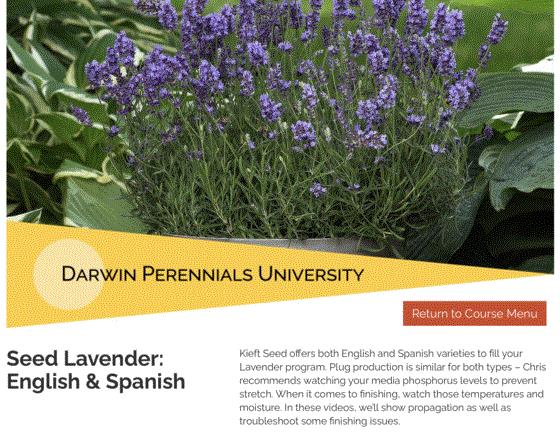
First is Production of Seed Lavender, followed by videos specific to finishing English and Spanish lavender. Plug production is similar for both types, and Chris recommends watching your media phosphorus levels to prevent stretch.
When it comes to finishing, carefully monitor temperature and moisture. In these videos, you’ll find information on propagation, as well as tips for troubleshooting some finishing issues.
All of the videos can be found HERE. You can also download a regional scheduling tool to help you and your team keep the crop on track.

Podcast: Build a Winning Lavender Program
If you agree with me that Chris Fifo is a perennials genius and equally talented educator, how about digging deeper into lavender selection and production with him?
In this highly downloaded PODCAST, he and I spent some time talking about the recent growth in popularity of lavender, as well as how it’s currently positioned in the market. Then Chris takes you into the virtual greenhouse to help you develop a frost-to-frost lavender program using the optimal methods to deliver the correct temperature, light, nutrition, gases and PGRs to your crop.
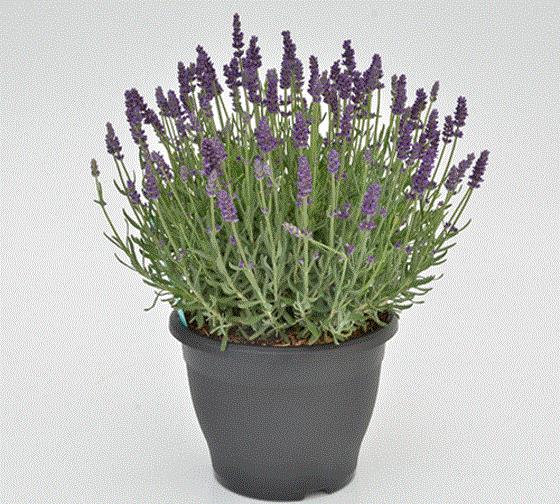
Our goal with the episode was to help you ship the absolute best lavender crop to market—because we know that when top-notch lavender arrive at retail, it sells fast!
After we talk production, Chris spends some time helping you select the best varieties for each use, from early season to Fall and from landscape performance to indoor use—he even touches on essential oil production.
If you’re a visual learner, Chris was kind enough to put together a PRESENTATION SLIDESHOW, as well.

Finish Line …
I’m a podcast junkie. I listen to podcasts while running, cycling indoors, driving—even while doing dishes! That’s why it’s one of the absolute best parts of my job to actually have the opportunity to host a podcast. With more than 60 episodes under my belt, I hope you’re finding the content useful, fairly professional and entertaining.
If you haven’t heard my previous show, STEM, or my current one, Tech On Demand, there’s no better time to go back through the episodes and find the ones most relevant to you and your greenhouse. Some cover single crops, others cover big-picture topics like insects and diseases or cut flowers. I’ve also interviewed guests on industry-wide topics like consumer data, school garden programs and breeding technology. I can just about guarantee you’ll find something of interest in our archives.
Intriqued? You can find archived episodes of STEM: INSIDER TIPS FOR GREENHOUSE PROS and TECH ON DEMAND, BROUGHT TO YOU BY GROWERTALKS on our hosting service, Podbean. You can subscribe to Tech On Demand on your favorite podcast app like ITUNES, SPOTIFY, GOOGLE, STITCHER and others, as well. Once you subscribe, you’ll get notifications when new episodes are available. And any good podcast host knows,we can’t sign off without asking listeners to leave a positive review. It only takes a minute and it’s very much appreciated.
If you have a chance to listen, let me know what you think and if there are topics you’d like to hear more about. I’m always looking for ideas. Thanks!



As always, my email is bcalkins@ballhort.com if you have any comments, suggestions or challenges we can help solve.

Bill Calkins
Editor - Tech On Demand
This email was received by you and 25,386 other fine subscribers!
If you're interested in advertising in Tech On Demand, contact Kim Brown ASAP and she'll hook you up.